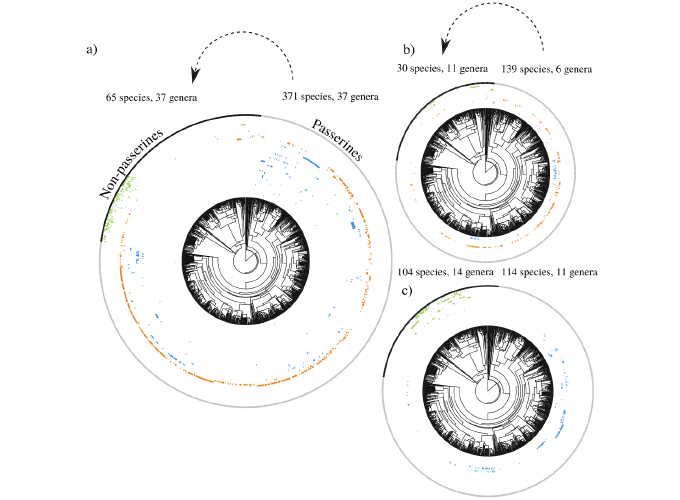Host-specificity, infrequent major host-switching and the diversification of highly host-specific symbionts: the case of feather mites

Host-specificity, infrequent major host-switching and the diversification of highly host-specific symbionts: the case of feather mites
Abstract
Highly host-specific symbionts are very rarely found except with their typical host species. Although switches to new hosts are rare and difficult to detect, a switch to a host phylogenetically distant from the original one (a ‘major host switch’) could allow diversification of the symbionts onto the new host lineage. The consequences of such major host switches on the diversification of highly host-specific symbionts of animals have rarely been explored. Here, we examine the host specificity of vane-dwelling feather mites, a group that shows strong specificity, together with their host-switching dynamics and the consequences of major host switches for their diversification.
Type
Publication
Global Ecology and Biogeography.